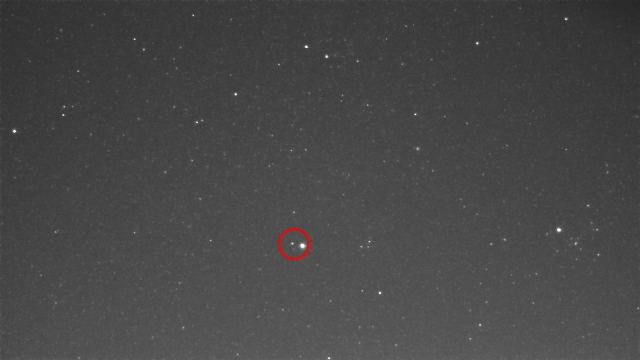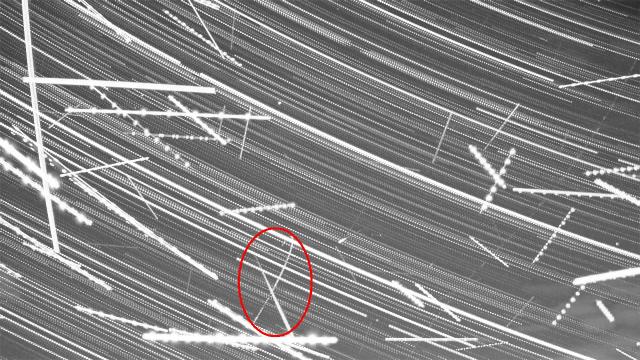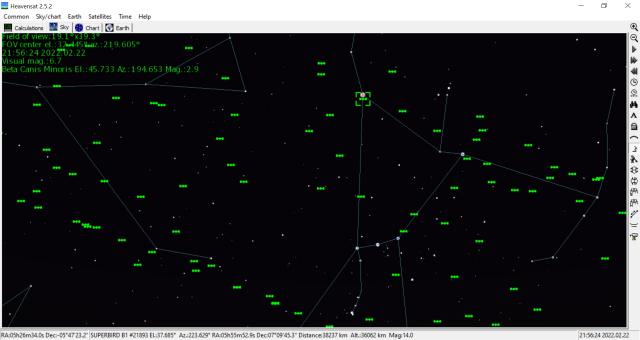Forum Replies Created
-
AuthorPosts
-
 Peter MeadowsParticipant
Peter MeadowsParticipantThanks James – just order a book as the code worked today (4th) as well.
 Peter MeadowsParticipant
Peter MeadowsParticipantHi James,
Good point – not sure not having a Lunt. I have a DayStar Quark where the UV/IR filter is before the etalon.
Peter
 Peter MeadowsParticipant
Peter MeadowsParticipantHi James,
I’ll try and answer your questions:
1. Yes a Ha telescope will only let light through centered on around 656nm with a bandwidth of < 10 nm (1 Angstrom). 2. Yes whiter areas are emitting more Ha and the darker areas less. So solar flares appear bright when they occur and filaments appear dark. Your image is very nice, showing plenty of detail in AR 3590 from last month. 3. Not sure what the blue filter is for but is likely to be a UV/IR blocking filter so care is required not to damage it (the visual colour of a filter does not necessary indicate what wavelengths it transmits or blocks).
 Peter MeadowsParticipant
Peter MeadowsParticipantBill, it appears to be a Sporadic Meteor – see https://archive.ukmeteors.co.uk/reports/2023/orbits/202312/20231230/20231230_020726.592_UK/index.html.
 Peter MeadowsParticipant
Peter MeadowsParticipantJames,
RA Mackenzie (Robert) is a member of the Solar Section and contributes by submitting his monthly observation to Lyn. If you wish to contact him, I suggest you contact Lyn.
 Peter MeadowsParticipant
Peter MeadowsParticipantHi Alex, I think I have been able to fit your limb profile to one of the eclipse images sent to the Solar Section. The attached image by Nic Spencer is taken in CaK light and nicely show detail on the limb – I’ve match feature in the profile and the limb image as indicated. Is it possible to extend your profile plot to include more of the limb shown in Nic’s image (also Nic lives in York)? If so I think it will confirm the features in the profile and image.
Attachments:
 Peter MeadowsParticipant
Peter MeadowsParticipantHi Alex,
Many thanks for generating the limb profile. I’ll see if I can match this to the eclipse images.
Best wishes,
Peter
 Peter MeadowsParticipant
Peter MeadowsParticipantHi Duncan,
Thanks for your questions about how to determine the sunspot number R from your observations. The general guidance about counting the number of groups is, as you say, based on the longitude and latitude separation of sunspots: 10 deg in longitude and about 5 deg in latitude. In the case of AR3105 and 3107, the center of these groups in longitude are more than 10deg apart but less in latitude. Certainly using the annotations on SDO HMI image from spaceweather.com can be useful to gain some experience of group separation but with experience this can be done oneself.
For sunspots with penumbra, it is the number of umbrae that should be counted towards the number of sunspots S. So if there is a penumbral sunspot with 3 umbrae, then this sunspot will contribute 3 to S. Individual sunspots, however small, also count towards S.
Yes, the observing equipment & conditions, the observer all contribute to each observers R value. It will also depend on whether an observers uses a low eyepiece for the full disk and then a high magnification eyepiece for the smaller sunspots. The key is to be consistent with your observing procedure from observation to observation, otherwise your daily R values will differ depending on how you observe. Each observer will have their own R values which will be different from other observers even from the same day – this is the advantage of combining observations from many observers as is done within the solar section.
You are welcome to add your daily observations to the BAA Solar Database which are collated monthly and published in the monthly newsletter (see attachment) and in the Journal. See https://britastro.org/section_information_/solar-section-overview/submitting-observations-2 for more details.
Peter
BAA Solar Section Assistant Director-
This reply was modified 3 years, 3 months ago by
 Peter Meadows.
Peter Meadows.
-
This reply was modified 3 years, 3 months ago by
 Peter Meadows.
Peter Meadows.
Attachments:
26 February 2022 at 5:01 pm in reply to: Flaring of synchronous satellites from Kelling Heath #585274 Peter MeadowsParticipant
Peter MeadowsParticipantOn the night of 22/23 Feb a bright geostationary satellite was seen for 6 hours from 18:50 to 00:49 UT using a RMS meteor camera pointing SW from Chelmsford, Essex. A single 10s frame is shown below – the red circle includes Betelgeuse (closest at 21:58 UT). The satellite is at about mag 2 being a bit fainter than gamma Orionis (Bellatrix) at mag 1.6. Also shown below is a composite for every 5th frame (minus a few due to cloud) showing the change in altitude/azimuth during the 6 hours, within red ellipse, due to parallax I assume. The satellite appears to loop around the track of Betelgeuse. It appeared in every other frame giving a time interval between flashes of ~20s.


Further investigation indicate that this is Superbird B1 Communications satellite NORAD ID 21893, COSPAR ID 1992-010A in a 36,063 x 36,198 km, 13.8° orbit as determined by Heavensat in the screenshot below when near to Betelgeuse. This software can also show when geostationary satellites are in the Earth’s shadow.

 Peter MeadowsParticipant
Peter MeadowsParticipantHi James,
I see that the original IAU Circular of the discovery is available online at http://www.cbat.eps.harvard.edu/iauc/02000/02022.html#Item1.
You might also be interested in an article written by George on his discover in The Astronomer magazine:
and also http://www.theastronomer.org/post/NASA%20ADS/ (select Vol4 for all TA magazines from this period).
Peter
 Peter MeadowsParticipant
Peter MeadowsParticipantHi Steve,
Yes sunspots do have proper motion. This usually depends on the type of sunspot and how active the sunspot group is. The best type of sunspots to determine the solar rotation rate are single penumbral sunspots that are circular in shape (when corrected for foreshortening). These sunspots are not particularly active and do not change appearance very much from day to day.
An example of large and small proper motion can be seen in Fig 24 of the paper ‘Sunspot groups without active region numbers’ in the June Journal.
At the moment we have a good range of sunspot latitudes, from about 15 deg to 30 deg N and S of the equator. Thus the sunspots at the lower end of this range will have very little differential rotation (the Carrington rotation rate corresponds to a latitude of about 18 deg) while the higher latitude sunspots will show much more differential rotation.
 Peter MeadowsParticipant
Peter MeadowsParticipantSurprisingly I managed to observe the Sun on 240 days in 2020, this being an extra 60 days compared to 2019 (and previous years) due to a fine and sunny spring, being able to work flexible hours from home which especially helped in November and December and not going away on holiday!
Nevertheless there was a bit of frustration due to lack of activity – for example during May I observed on 30 days without a single sunspot seen! It is good now that activity has improved since mid-October albeit only mainly in the southern hemisphere.
So looking forward to observing many more sunspot groups in 2021 (and for northern hemisphere activity to start in earnest).
 Peter MeadowsParticipant
Peter MeadowsParticipantNick,
This http://www.met.reading.ac.uk/~williams/publications/10.1002_wea.1890.pdf will be of interest suggesting analysis during the year will also be useful.
Peter
 Peter MeadowsParticipant
Peter MeadowsParticipantHi Steve,
Although December 2019 may ‘officially’ be at the start of Cycle 25, we have been and are still seeing a mixture of both Cycle 24 and 25 sunspots – there is usually an overlap of 18 month or 2 years between cycles. Sunspot from the two cycles can be distinguished by their latitude with old cycle spots being near to the equator and new cycle spots being at higher latitudes. The different cycle spots, in the same hemisphere, also have opposite magnetic field polarity.
The ‘official’ date of start of the new cycle is based on monthly sunspot numbers which are smoothed over a period of 13 months and so the minimum value is not known for 6 months or so. It is possible this date may get revised if the coming months have very low activity – activity in September was very low with almost no sunspots.
Peter
 Peter MeadowsParticipant
Peter MeadowsParticipantHi John,
You might find this link useful – https://www.usno.navy.mil/USNO/earth-orientation/eo-products/long-term – this gives historic and predictions for delta T.
Peter
 Peter MeadowsParticipant
Peter MeadowsParticipantAs an experiment I tried to image the comet through an ETX 105 with a Canon D550 (12th July 2020 at 01:54UT). As there was no tracking, I had to keep the exposure short at 2s and used a high ISO at 6400. It does show some structure, a bit like, but not a good as, Paul Able’s drawing from yesterday at https://britastro.org/node/23148.
 Peter MeadowsParticipant
Peter MeadowsParticipantSaw multiple Starlink satellites this evening from 20:00 to 20:30 UT including 7 at the same time, all at about mag 1.
Just read the next batch are due to be launched tomorrow, Wednesday, April 22 at 3:37 p.m. EDT [1937 GMT] – see https://www.space.com/spacex-earlier-starlink-6-launch-date-april-2020.html
 Peter MeadowsParticipant
Peter MeadowsParticipantHi Peter,
As far as I am aware the PST ‘rust’ problem only occurs on the main objective lens and not elsewhere. Since you mention that your objective is ‘blue’ then this would indicate you do not have the rust problem. Even with low activity in hydrogen alpha, such as at the moment, you will always be able to see the chromospheric network that occurs all over the disk – see for example the second image (right hand side) on page http://www.petermeadows.com/astroimaging/ (this Ha image was taken with a PST).
You should slowly adjust the etalon ring and always ensure you have good focus until you see the network. You may need to move the etalon back and forth and few times. If the solar disk is uniform without any texture than you are either off frequency or there is a problem with the etalon.
With your PST did you every see any prominences/filaments etc? Is it still under warranty?
Hope this helps.
Peter
 Peter MeadowsParticipant
Peter MeadowsParticipantHi Peter,
I saw both planets this evening as well at about 17:30 UT. First spotted Mercury in binoculars low down in the west and once found it was easily seen with the naked eye.
Peter
 Peter MeadowsParticipant
Peter MeadowsParticipantI thought I recognised the comet photo in the Mirror article – it is Comet West 1975 VI from 1976 – see the following link
https://enacademic.com/pictures/enwiki/67/C_1975_V1_%28West%29_1976-03-09_6h_UTC.jpg
I was new to astronomy back then but heard about this comet but failed to see it in the pre-dawn sky – I then joined ‘The Astronomer’ to make sure I didn’t miss any other bright comets!
-
AuthorPosts

